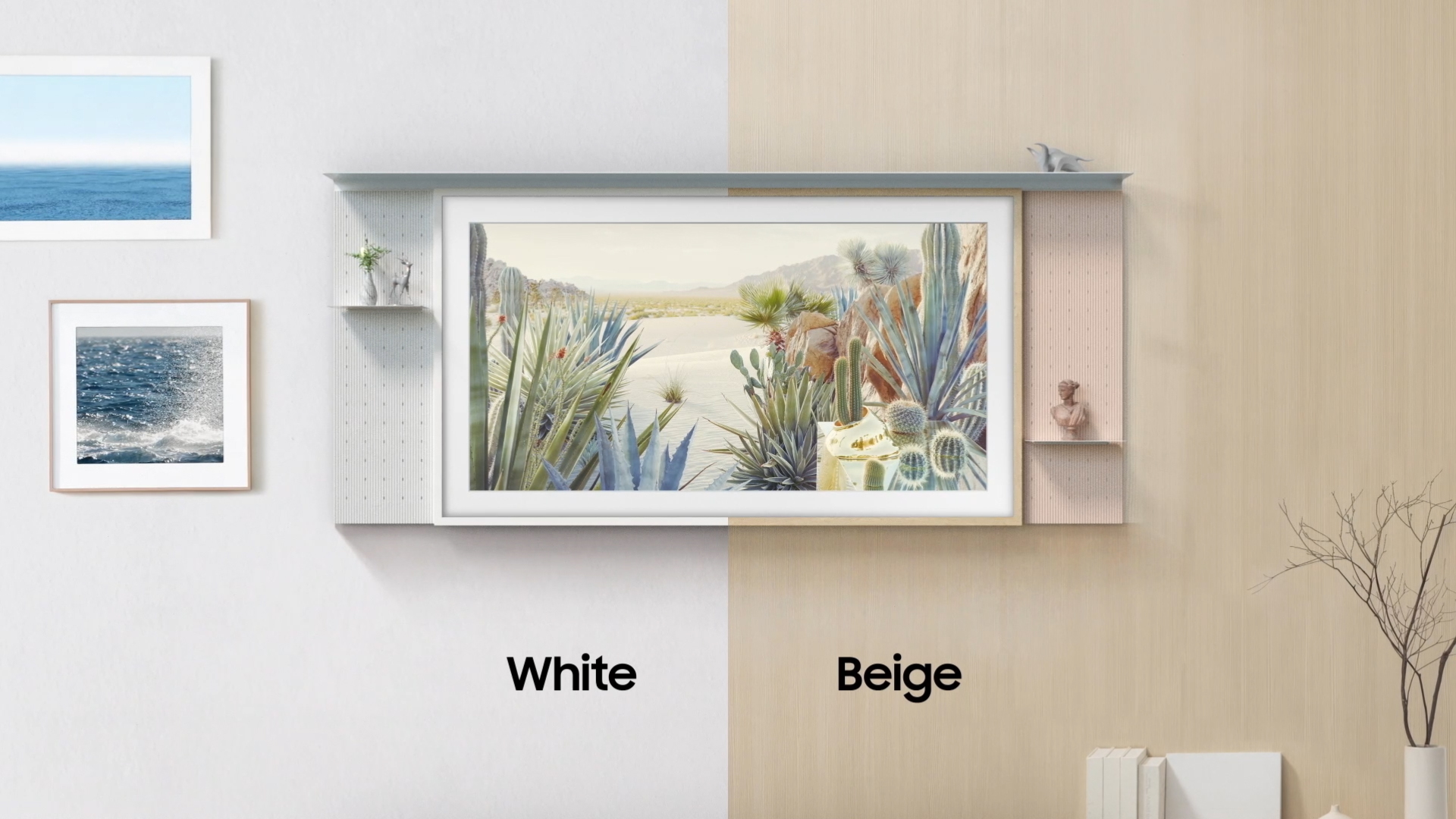Looking for a white TV? Here’s why you can’t find one

Update 1/31/2021: This story has been updated with a quote from Aaron Dew, Senior Director of Product Development at TCL North America.
Finding a white TV can feel a bit like hunting the White Whale in Moby Dick - you know they’re out there, somewhere, but finding them has proven to be a lifelong task. In fact, in our quest to track them down for readers, we only came across two models available in 2022: the 32-inch LG 32LM620BPUA and Samsung’s The Frame, which only qualifies because you’re able to swap out the bezels on the TV for an all-white trim.
Both are fine TVs for their intended purposes: the 32-inch LG TV is only a 720p model that works better in a kitchen or a kid’s room, while Samsung’s The Frame is a designer screen that’s meant to blend in rather than stand out. That said, while each has its niche, neither really fulfill the role of a true living room home cinema screen.
So why, out of the dozens of new TVs unveiled every year, are there just two white TVs? We had to get to the bottom of it, so we went straight to the source and asked our contacts at LG, Sony and Samsung to explain why there aren’t more options available.
The real reason you don’t see many white TVs
The answer of why there’s not more of these albino bezel screens is actually pretty straightforward: it goes against everything these companies work toward year after year.
“White has been popular in certain applications, for example, smaller TVs targeted for kitchen use. We currently offer a white TV in a 32" FHD screen size,” says Tim Alessi, Senior Manager of New Products at LG Electronics. “However, for larger screens used in living rooms or home theater applications, white is not desirable for a couple of reasons.”
"A great deal of effort is made to minimize the visible bezel so the viewer sees ‘all picture’ for the most immersive viewing experience. Using white would negate these efforts by making whatever bezel is visible too prominent."
Tim Alessi, LG Electronics
“First of all, a great deal of effort is made to minimize the visible bezel so the viewer sees ‘all picture’ for the most immersive viewing experience. Using white would negate these efforts by making whatever bezel is visible too prominent. The other reason is that darker, or metallic finishes have a more premium look which most people prefer on a large-screen TV.”
Sign up for breaking news, reviews, opinion, top tech deals, and more.
That last bit is obviously subjective - as some of our readers have asked outright for white TVs - however, you can’t argue the fact that a white bezel would make it stand out more when you’re watching a TV show or a movie.
When we asked Sony about it, we got a similar response.
“White generally contrasts with on-screen content, leading to a less immersive experience,” a Sony representative told us over email. “Also, from a design standpoint, we feel that black provides a more premium look and feel.”
When we asked TCL, the rising star of the US TV market, they simply told us that they've already tried it and customers didn't really respond to it.
"In the past TCL sold TVs in the US with a variety of color accents," says Aaron Dew, Director of Product Development at TCL North America.
"While a small group of customers were enthusiastic about different color options that we offered, the overwhelming majority of our customers were not motivated to buy TVs with different color options."
Aaron Dew, TCL North America
"While a small group of customers were enthusiastic about different color options that we offered, the overwhelming majority of our customers were not motivated to buy TVs with different color options. Our customers tell us that they most value having easy access to streaming entertainment and the latest display technology to deliver exceptional picture quality. So that’s where TCL TVs are focused today."
Long story short? TVs with white frames really aren’t conducive to the home cinema experience, nor have they been historically popular with customers.

Samsung has a white TV... if you're willing to pay more for it
The only TV that might fill the role of a proper living room screen is Samsung’s The Frame.
Released a few years ago to appease the more aesthetic-focused crowd, The Frame is part of Samsung’s Designer Series of TVs that also includes The Serif and The Sero.
By default, The Frame comes with a black bezel - but its secret weapon is that the bezel can be swapped out for a different one, including an all-white trim. Each of the available trims are available to buy separately for $99 / £99 (around AU$140) while the base 50-inch model of the TV sells for $1,199 / £999 / AU$1,699.
This is a lot pricier than other 50-inch 4K HDR QLED TVs, but it’s a price most folks have been willing to pay.
“The breadth of Samsung’s TV lineup shows that we listen to our customers, innovating our products to fit their needs and passions,” a Samsung representative told TechRadar over email. “That can mean designing TVs to include our Gaming Hub for gamers, a better Home Screen for streamers, or in this case, TVs that maximize design & décor versatility. It’s this level of personalization that have made The Frame and The Serif such a hit with consumers.”
In some ways, it might feel unfair that you have to pay more for the white trim on a TV - but, for now, Samsung is the only manufacturer fulfilling consumers’ desires for a white TV and therefore can charge a bit of a premium for it.

Don't worry, soon bezels will be a thing of the past
Like the word ‘fetch’, white TVs aren’t going to happen - at least not anytime soon. But that might not be a bad thing as most manufacturers are in the process of making nearly bezel-less TVs. Each of the three manufacturers above has TVs with supremely thin bezels in their lineups. Samsung has the bezel-free Q950TS 8K QLED TV that made its debut in 2020 and the Samsung QN900A that debuted in 2021, while LG has recently shaved the bezel on its new OLED TVs from 6mm down to 4mm.
Reducing bezels or outright removing them entirely are huge areas of interest for manufacturers - outside of picture quality and performance, it's probably where they spend the most time in the design process.
What that tells us is that we won’t have to worry much longer about the color of the bezels for much longer. Yes, these TVs will still come with stands that are either metallic or black, but folks who wall-mount them will have a seamless look without worrying if the TV will match the décor of the rest of the room.
So, to all the interior designers out there: don’t worry, your deliverance is coming.
- Looking for the TV with the best picture performance? Check out our guide to the best TVs

Nick Pino is Managing Editor, TV and AV for TechRadar's sister site, Tom's Guide. Previously, he was the Senior Editor of Home Entertainment at TechRadar, covering TVs, headphones, speakers, video games, VR and streaming devices. He's also written for GamesRadar+, Official Xbox Magazine, PC Gamer and other outlets over the last decade, and he has a degree in computer science he's not using if anyone wants it.